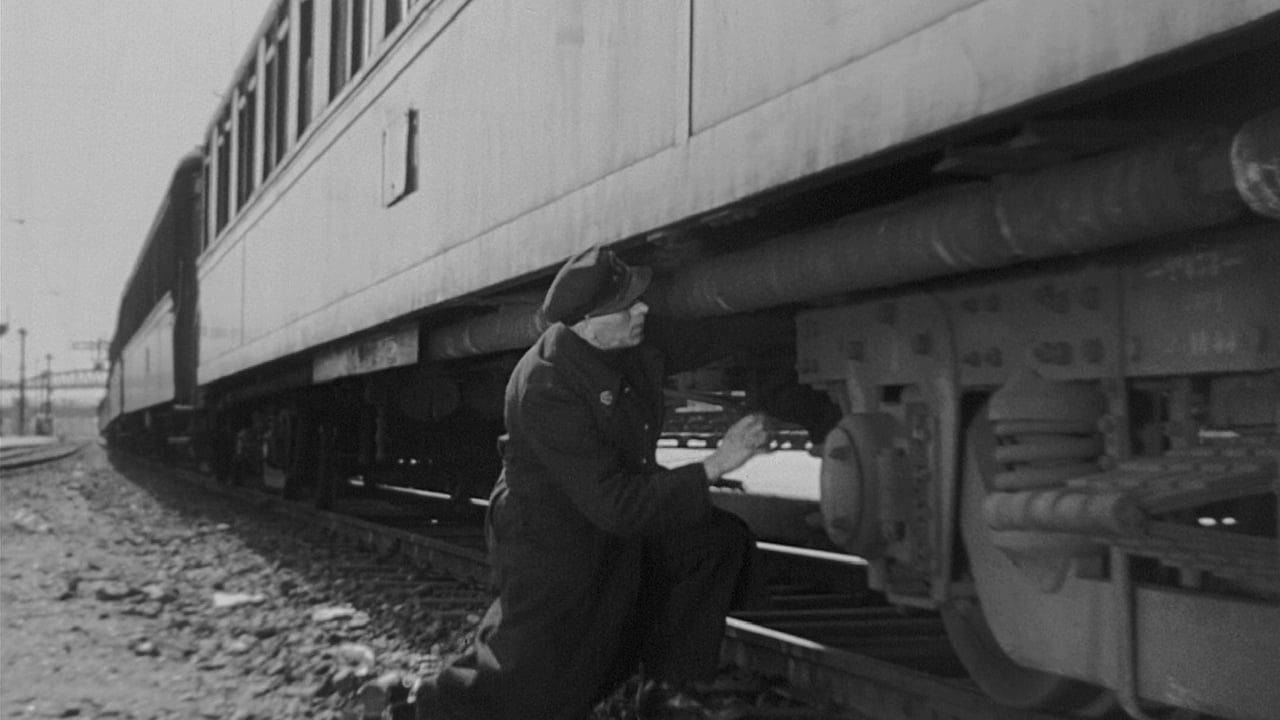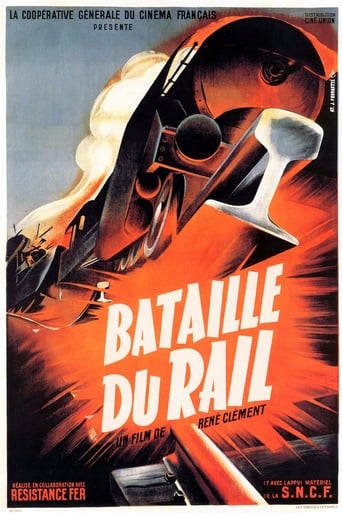

Unlike Hollywood and the UK who were turning out war-themed films throughout the six years of conflict and kept right on doing so after hostilities ceased French cinema got into the game in the last quarter. As an Occupied nation from 1940 to 1944 they were, of course, unable to produce and films reflecting the national climate and with the exception of La Bataille du Rail in 1946 and for perhaps obvious reasons, it took them more or less a quarter of a century to portray the Resistance on film with the best, Melville's L'Armee des Ombres, weighing in around 1970. That makes La Bataille du rail all the more interesting if not, indeed, valuable for being shot within weeks of the end of the war and using real railway employees, many of whom had been active in French Resistance, rather than professional actors. Debut director Rene Clement, who went on to become one of the most honoured filmmakers in terms of Prizes won, opts for a documentary feel rather than Hollywood-type heroics and his understated style is ideal for the tale he is telling. A decent print would be useful but it remains a keynote in French cinema.
... View More"The Battle of the Rails", Rene Clement's homage to the bravery of the railway workers of France is an interesting example of the work of the director, who had worked up to that time in documentaries. This 1946 film shown recently on a French international channel pays tribute to the men that defied the German invaders in the way they only knew how, by engaging in sabotage to the trains the German used to transport supplies and equipment from France to Germany.Mr. Clement early style could be described as being neo-realist in the way he chose the material for his documentaries. In fact, this was his second time as a full length feature director. Here, working with co-writer, Colette Audry, he reenacts those terrible years of the conflict. To their credit, the railway workers were united in their effort to erode the power of their enemy by whatever means to make a dent in the horrible situation they were put, having to work for the enemy.The film was photographed by Henri Alekan, a survivor of the camps, who was able to survive his horrific experience at the hands of the Germans. The music score by Baudrier blends well with the material. Charles Boyer, the actor acts as the narrator. The film is a tribute to the valor of the courageous men who dared to resist the ruthless invaders.
... View MoreRené Clément directed this exceptional film which captures an important but often ignored part of the Allied war effort in WWII. It chronicles the efforts by the French railway workers to hinder the German war machine. What makes the film work wonderfully is the non-professional actors--like the Neo-realist actors in post-war Italian films (such as by DeSica and Rossellini). This gives the movie a great sense of realism--almost like a documentary that was somehow filmed as events really took place--though it was made just after the war.The film begins sometime after the German occupation began--it's never exactly certain. During this time, random acts of sabotage occur but they are mostly annoying and are seemingly unorganized. However, partway through the film, the Resistance receives word that the Normandy invasion has occurred. Suddenly, the full extent of the French Resistance is obvious, as the entire effort to use the rails to reinforce the German army are frustrated in many, many ways--ranging from sabotaging the tracks and equipment to even attacks on the trains themselves by partisans."La Bataille du Rail" ("The Battle of the Rails") works very well--mostly because in addition to the non-actors working in the film, the director and writers (one of which was the director himself) used a lot of tense little vignettes in the film to draw in the viewer. Perhaps some today might find it all a bit boring (after all, they are more interested, perhaps, in seeing the newest Brandon Frazier film), but as a history teacher, I think it's a must-see! Wonderful.By the way, you can't blame the film makers for this, but the print I saw was pretty shabby. It had a lot of scratches and the white captions were poor--blending into the scenes at times and also, occasionally, mistranslated or using jargon that is too technical (full of railroad terms and jargon). I would LOVE to see this film restored and re-captioned!
... View MoreBased on real life events that occurred between the Normandy Landings and the liberation, La Bataille du Rail was commissioned by the Associations of the Resistance soon after the end of the Second World War. That a war film would be put into production so soon after the end of the war and that it would prove so successful with a public that lived through it suggests a desire to show the extent of the resistance's achievements and the pride of the French.However, Clément carefully avoids making the film too didactic or sentimental. We can see how the ruthlessness of the occupying forces in rooting out the saboteurs and their anti-Semitism is not overplayed as their portrayal seems appropriate to a modern audience not directly scarred by the events shown. Another way in which he achieves this is through the way the camera stays relatively detached from the action, showing the events almost like a documentary rather than forcing us to identify with any of the characters. It has been said that the cast was made up of unprofessional actors and in some cases real railwaymen. This adds to the realism and creates an effect where no one film star stands out as an obvious "hero", enforcing a message of "ordinary men doing what they had to".
... View More